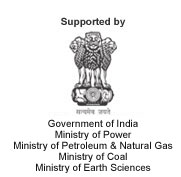Permian dark gray shale sediments of Raniganj Field in Damodar Basin with high total organic content (TOC) and high thermal maturity are the prospective shale gas plays in India. The main Damodar valley sub-basins are Hutar, Auranga, Karanpura, Bokaro, Jharia and Raniganj. This paper presents the geological investigations carried out in Raniganj sub-basin/Field to understand the key geological factors which control the shale gas generation, accumulation and as well as production.
The Raniganj sub-basin is a typical half-grabben type E-W trending and westerly plunging synform. Depositional environment of the sub-basin is principally terrestrial (fluvial and lacustrine) with abundant Glosspteris flora excluding the local marine transgressions during the Sakmarian – Artinskian period. The Raniganj Field covers about 1530 km2 area. Permian age at the base overlying large areas of pre-Gondwana metamorphic rocks unconformably. Barakar and Raniganj Formations, succeed the Talchir deposits, and comprise fluviatile sediments deposited with intermittent thick coal seams. A fluvio – lacustrine sequence, devoid of coal and known as the Iron Stone Shale or Barren Measure formation of Permian age separates the two coal measures.It has evolved through several tectonic events which form different sets of existing natural fractures in response to regional stress models. The field and laboratory investigations reveals that the shale sediments are up to 1000m thick and comprised of dark grey to black shale with ironstone bands/nodules, the monotonous grey to black micaceous, often carbonaceous shale and also sandy with minor thin sand/silt/shale intercalation. The shale thickness increases towards the south direction. The shale is rich in TOC with a range of 4 to 21 %, kerogen type III. It indicates that mineralogical composition variations and fabric anisotropy at scales are notable in this field. These variables are integrated to recognize several lithofacies, shale successions of the area, associated with complex present regional in-situ stress data, confirm the impact of depositional environments and tectonic events on rock geochemical and geomechanical characteristics correlate with these lithofacies which may cause great impact to the response to hydraulic fracturing stimulation and production potential of shale gas in multi zones. Besides, the wide-ranging geologic approach, some insights into understanding key geological factors and processes in different areas to identify prospective shale gas fairway over Raniganj Field.
|










